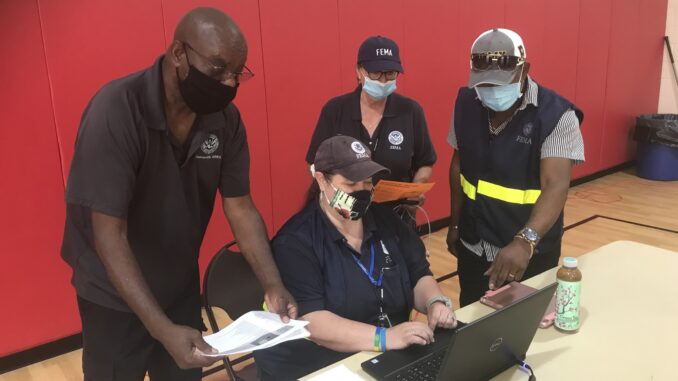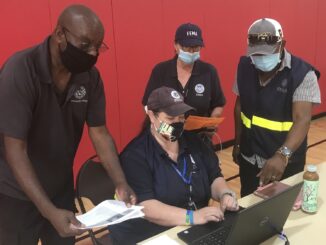
PASCACK VALLEY AREA—Westwood Mayor Ray Arroyo told Pascack Press on Oct. 24 that the New Jersey State League of Municipalities Legislative Committee has voted to endorse S-790, a bill by state Sen. Holly Schepisi (R-River Vale) that Arroyo says has languished in committee since Jan. 18.
The legislation requires the state Department of Environmental Protection and owners of certain reservoirs implement certain flood control measures, and authorizes Office of Emergency Management to order lowering of reservoir levels in response to severe weather events.
Arroyo urges action that he says is desperately needed to stave off storm-related havoc in costs measured in dollars and quality of life.
Schepisi (R-River Vale) and Joseph Lagana (D-Paramus) introduced the legislation to regulate reservoirs in January. Assemblyman Robert Auth, (R-39) introduced bill A-4200, along with Assemblywoman DeAnne DeFuccio (R-39) and Christopher Tully (D-38).
Earlier this month Arroyo wrote the members of the New Jersey Senate and Assembly committees that have been tasked with reviewing S790/A4200.
Arroyo requested of the Assembly committee members, who hosted a hearing on Oct. 6 to acknowledge the 10th anniversary of Superstorm Sandy and discuss storm mitigation, preparedness and resiliency, that this correspondence be included as testimony for that hearing.
The New Jersey State League of Municipalities is a voluntary association “created to help communities do a better job of self-government through pooling information resources and brainpower.”
It says it is authorized by state statute and since 1915 has been serving local officials throughout the Garden State. All 564 municipalities are members of the League.
According to Arroyo — he later shared his comments on his Facebook page — “The Flood Group that councilwomen [Erin] Collins [a Democrat] and [Cheryl] Hodges [a Republican] is working with has now garnered over 800 signatures on its change.org petition in support of the legislation.”
Blue Acres looking at eight homes for buyout
Arroyo said, “The increasing importance of passing S-790 (A-4200) is underscored by the recent communication the borough received from the [New Jersey Department of Environmental Protection] Blue Acres Program. Blue Acres is looking at eight SRL [severe repetitive loss] homes in Westwood for potential buyouts pending confirmation of eligibility and availability of federal funding.”
He said, “Should all eight come off the tax rolls that would represent a net tax revenue loss of $71,647 (school and municipal portion equals $63,197, per 2022 valuations and tax rates).”
(We have requested copies of the Blue Acres correspondence with the borough; a borough staffer said federal law prevented the borough from releasing the property list.)
Arroyo said, “That may seem like a reasonable price to pay for additional green space. However, as we are a fully developed community, returning improved parcels to nature — on a scale that significantly reduces aggregate flood loss — can increase pressure for higher density redevelopment projects elsewhere in the borough, to offset that revenue reduction.”
He said “The state’s policy preference is to remove these flood-threatened homes, families and businesses through negotiated buyouts.”
In contrast, he said, the Borough would like its residents “to have the option of remaining members of the Westwood family, and not be forced to uproot themselves and their children to start anew someplace else. We’d like to keep the unique businesses that contribute to the serendipitous shopping and services Westwood offers.”
Since its inception in 1995, the state says, “DEP Blue Acres has worked to better protect public safety and the environment by relocating New Jersey families whose homes are subject to repeated flooding and acquiring property for use as natural flood storage, parks, and community open space.” Via its webpage, dep.nj.gov/blueacres, today, DEP Blue Acres has two core missions: disaster recovery and preparedness.
Arroyo said “The state’s DCA [Department of Community Affairs] Ida Recovery program offers elevation funding as reimbursable grants — a harder option for most homeowners than a simple buyout.”
He explained, “The property owner must front the elevation expense ($150,000 on average) and get reimbursed up to 75% upon completion.”
He also said there is a FEMA [Federal Emergency Management Agency] program that reimburses qualified grantees 100% of eligible costs.
“A piecemeal loss of ratable extrapolated, at scale, over time, can eventually present revenue challenges that the governing body will have to flag as a ‘what if’ in its fiscal planning. Inflation and recession […] place additional stresses upon municipal budgets,” Arroyo said.
The mayor said, “The responsible flood mitigation protocols required by S-790 can help keep residents in their homes and tamp down rising flood insurance premiums. It can help preserve the tax ratable that local government, county government and school districts depend upon to deliver quality services and infrastructure improvements. It can reduce pressure for high density overdevelopment.”
He added, “And it’s a low-cost alternative to more effective, system-wide infrastructure interventions that neither county, state nor federal governmental entities have, to date, deemed worthy of pursuit.”
In for a dousing
The borough explains on its website, westwoodnj.gov (click Residents, then Flooding Information) that “Flooding occurs in Westwood along the Pascack and Musquapsink Brooks during severe rain events, although flooding may also occur in other areas of the borough due to various topographical and infrastructure conditions.”
It says “Stormwater runoff can elevate stream levels for hours, and even days, after the rain ends. Weather patterns to the north, including New York State, and the resultant drainage into the various brook tributaries, can result in flooding in our area well after a storm has passed.”
With the Woodcliff Lake Reservoir situated to the north of Westwood, the site says, many residents consider the reservoir and dam operations to be a contributing factor to local flooding.
The borough notes it has no control over the operations of the dam or the reservoir. “Seasonal water levels, and the release of water by Veolia (formerly Suez) prior to, during and after a storm event, are all subject to DEP regulations, which prioritize the preservation of the water asset and the structural integrity of the dam.”
Six buyouts led to passive park
In 2018, the borough dedicated Pfc. Richard F. Nugent Park, at Harding Avenue and Nugent Place, as the first new municipal park created since 2011.
Nugent, who’d attended Westwood High School and left a year shy of graduation, April 29, 1963, to enlist in the U.S. Marine Corps, was kiled in action in Viet Nam on Feb. 28, 1966, three weeks shy of his 20th birthday. He is buried at Arlington National Cemetery.
In May 1966, then-Westwood Mayor John G. “Bud” Stasse wrote to Nugent’s mother, Madeline Nugent, advising her that a new street in the area of Harding Avenue would be named for her son.
Forty–five years later, the Borough of Westwood began purchasing homes in the area of Harding Avenue and Nugent Place in order to help alleviate flooding that has ravaged the area.
Through FEMA and New Jersey Green Acres and Blue Acres funding, the borough purchased six homes.
The Bergen County Mosquito Commission razed the properties — before the sixth structure went down, Bergen County SWAT used it for training — and the borough returned them to their natural state, creating a pervious surface to absorb rainfall, reduce runoff, and potentially decrease the level of water in the Pascack Brook during storms.
The borough’s Open Space and Recreation Plan was revised to include the six properties, and now the area is a passive park for neighborhood residents to enjoy.
In 2018, then-mayor John Birkner Jr. — who led meetings with a report on the reservoir’s watery height — suggested that the property on Nugent Place be dedicated as a park and named, with respect, in Nugent’s memory.


